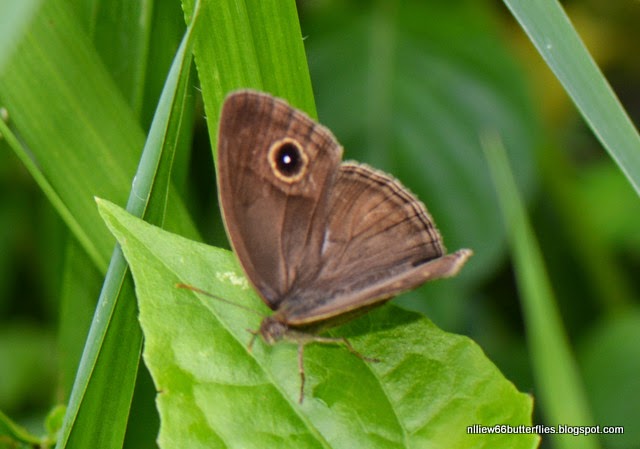This is quite a common butterfly to be found around villages fringing wooded areas as well as along open trails in the wood. This butterfly belongs to the mineus-group of Mycalesis that has many members closely ressembling one another.
Of all the Mycalesis, it most ressembles M. visala and can be differentiated by the above feature.
Of all the Mycalesis, it most ressembles M. visala and can be differentiated by the above feature.
Habitat indicator
RSP
|
WV
|
PG
|
VF
|
FTR
|
SC
|
LWDF
|
LWPF
|
LMEF
|
UMN
|
MN
|
x
|
x
|
x
|
x
|
x
|
x
|
x
|
x
|
Frequency observation chart: (S marks the usual occurence, H mark an unusually high occurence, F for first record)
2013
|
2014
| ||||||||||
Nov
|
Dec
|
Jan
|
Feb
|
Mac
|
Apr
|
May
|
Jun
|
Jul
|
Aug
|
Sep
|
Oct
|
S1
|
S1
|
S1
|
S1
|
S1
|
S4
| ||||||
2014
|
2015
| ||||||||||||
Nov
|
Dec
|
Jan
|
Feb
|
Mac
|
Apr
|
May
|
June
|
Jul
|
Aug
|
Sep
|
Oct
|
Nov
|
Dec
|
S6S7
|
S6S7
|
S6
|
S4
| ||||||||||
|
2016
|
|||||||||||
|
Jan
|
Feb
|
Mac
|
Apr
|
May
|
Jun
|
Jul
|
Aug
|
Sep
|
Oct
|
Nov
|
Dec
|
|
|
|
|
|
|
|
|
|
|
|
|
|











No comments:
Post a Comment